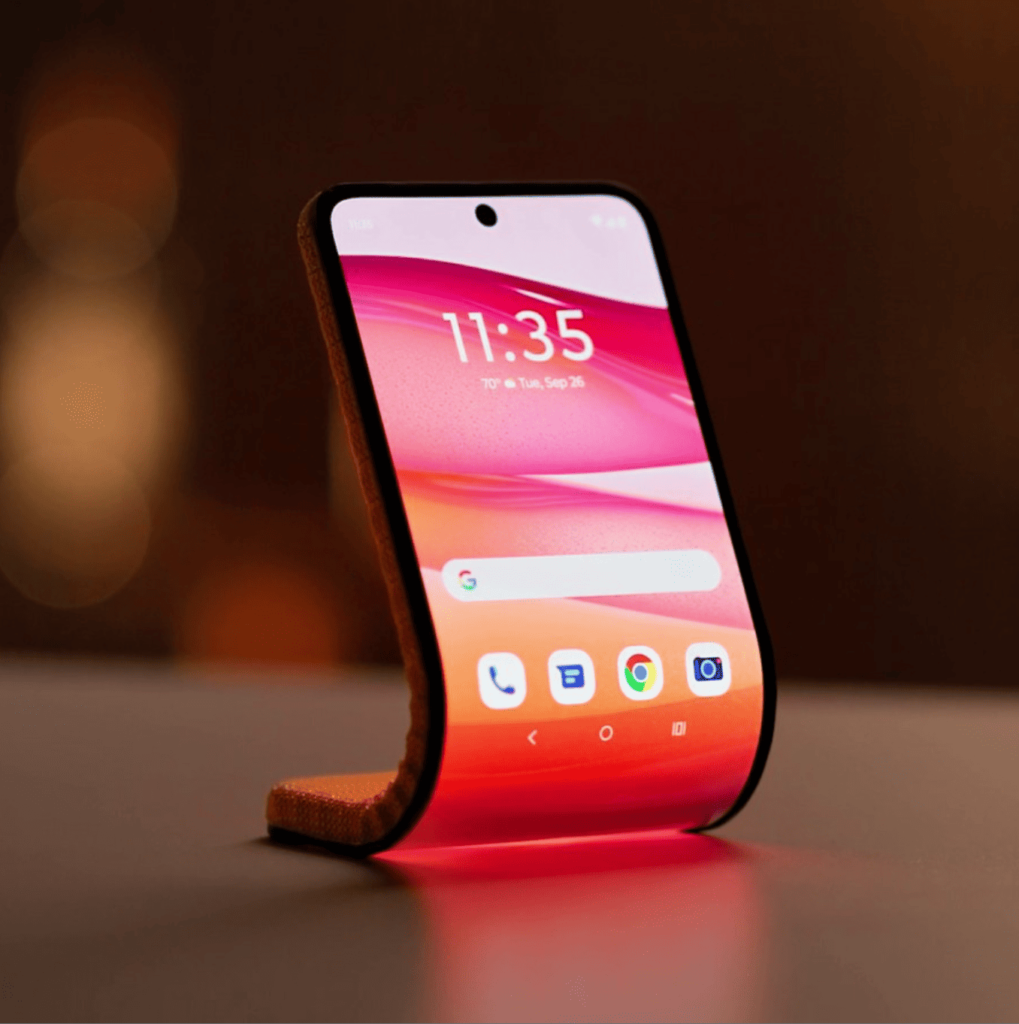Motorola Showcases Bendable Display: Phone or Wristband? A Glimpse into the Future of Mobile Devices.

At the Mobile World Congress (MWC) 2024, Motorola unveiled a revolutionary concept that has the potential to redefine the way we interact with our mobile devices. This innovative creation, known as the “Adaptive Display,” is not quite a phone and not quite a wristband, but rather a unique blend of both, blurring the lines between categories and sparking intrigue across the tech world.
The centerpiece of the Adaptive Display is a 6.9-inch flexible plastic-based pOLED display. This revolutionary screen holds the key to the device’s adaptability. Unlike traditional foldables that bend at specific hinges, the Adaptive Display boasts a more fluid bendability, allowing it to be shaped into various forms depending on the user’s needs.
Transforming Forms:
Imagine a phone that can effortlessly transition between a full-fledged smartphone, a self-standing display for hands-free viewing, and a comfortable wristband for quick notifications and essential functions. This is precisely the versatility that the Adaptive Display promises.
- Phone Mode: When laid flat, the display unfolds to its full 6.9-inch size, offering a traditional smartphone experience with the familiarity of a full Android interface. Users can comfortably browse the web, play games, or catch up on their favorite videos.
- Stand Mode: For hands-free viewing, the display can be adjusted into a self-standing position. This mode, reminiscent of a mini-tablet, is ideal for video calls, watching movies, or following recipes in the kitchen.
- Wristband Mode: The true innovation lies in the ability to bend the display around the wrist, transforming the phone into a comfortable and functional band. This mode provides quick access to notifications, fitness tracking, and essential controls, mirroring functionalities similar to a smartwatch.
Beyond Form: Innovation and User Experience:
Motorola envisions the Adaptive Display as more than just a shape-shifting device. The company has incorporated AI features to enhance the user experience and cater to individual preferences.
- AI-powered Personalization: The device boasts an AI model that can personalize the interface based on user preferences. Imagine your phone’s wallpaper seamlessly adapting to your outfit, or the notifications displayed on your wristband adjusting based on your activity level. These AI-powered features aim to create a more intuitive and personalized user experience.
Blurring the Lines: A New Category or a Bridge Between Two?
The arrival of the Adaptive Display raises the question: is it a phone trying to be a wristband, or a wristband striving to be a phone? The answer might lie in the potential it holds to create a new category altogether.
Traditional smartphones are often bulky and inconvenient to carry, while smartwatches lack the functionality and screen size of a full-fledged phone. The Adaptive Display bridges this gap, offering the best of both worlds in a single, adaptable device.
Challenges and Uncertainties:
While the concept is undoubtedly innovative, it’s important to acknowledge the challenges that lie ahead. Durability and crease resistance of the bendable display are crucial aspects that require further refinement. Additionally, the user interface needs to adapt seamlessly to the different form factors to ensure an intuitive and comfortable experience.
The Road Ahead: A Glimpse at the Future?
The Adaptive Display is still in its early stages of development, and it’s unclear when, or even if, it will become a commercially available product. However, it serves as a testament to Motorola’s commitment to pushing the boundaries of mobile technology and exploring the possibilities of a future where our devices adapt to our needs, seamlessly fitting into our lives.
The future of mobile technology is constantly evolving, and the Adaptive Display is a captivating glimpse into what that future might hold. As bendable display technology matures and user preferences evolve, the lines between phones, tablets, and wearables might blur even further, paving the way for a new generation of adaptable and personalized mobile experiences.
